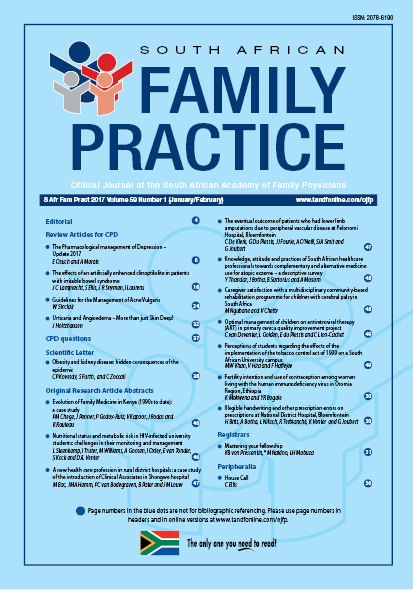Urticaria and Angioedema – More than just Skin Deep!
Keywords:
Angioedema, urticaria, chronic spontaneous, mast cells, pruritus, itch, histamine, hive, wheals, omalizumab
Abstract
Urticaria and angioedema are characterized by pruritic hives and sometimes swelling of deeper mucocutaneous layers. Urticaria is caused by release of histamine and other mediators from mast cells. A cut-off of six weeks distinguishes acute and chronic forms, as these seem to differ regarding etiological and response patterns. Angioedema may be histaminergic or due to factors involving the bradykinin pathway. Medications such as ACE-Inhibitors or conditions affecting the C1-esterase inhibitor enzyme are potential causes. Acute urticaria may be related to triggers such as infections, medications or food allergy. When occurring with systemic symptoms and a temporal relationship to food or drug ingestion, IgE mediated allergy could be considered. Chronic Inducible Urticaria (CInd) is suspected on history and may be confirmed by provocation testing where physical and other specific trigger factors elicit the wheals. The term Chronic Spontaneous Urticaria (CSU) is used when symptoms persist for more than six weeks in the absence of inducible factors. A single cause is seldom found but a thorough history and clinical evaluation may elicit trigger factors and associated medical conditions such as auto-immune or thyroid disorders. Indiscriminate food allergy testing is unhelpful, but additive intolerance may be implicated in some cases. Modern non-sedating antihistamines are the mainstay of treatment, and omalizumab or immunosuppressives may be considered for refractory cases. Emotional support is needed as the condition is associated with psychological distress. If there are unusual features, vasculitis, auto-inflammatory or haematological conditions should be considered and skin biopsy or detailed immunological work-up may be indicated.
Published
2016-11-29
Section
Review Articles
By submitting manuscripts to SAFP, authors of original articles are assigning copyright to the South African Academy of Family Physicians. Copyright of review articles are assigned to the Publisher, Medpharm Publications (Pty) Ltd, unless otherwise specified. Authors may use their own work after publication without written permission, provided they acknowledge the original source. Individuals and academic institutions may freely copy and distribute articles published in SAFP for educational and research purposes without obtaining permission.

